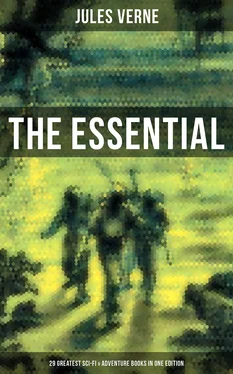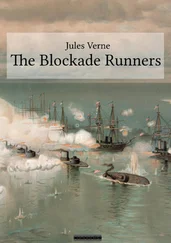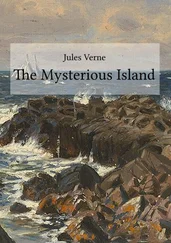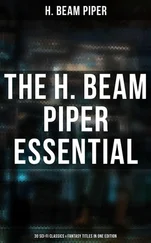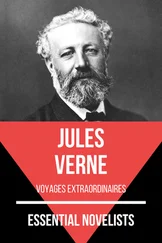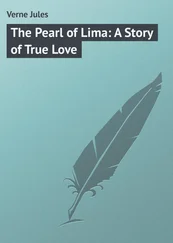“You see, old fellow,” he said to him, “you must not be offended, but really, between ourselves, you are too incomplete to present yourself in the moon.”
“Incomplete!” cried the valiant cripple.
“Yes, my brave friend. Suppose we should meet with inhabitants up there. Do you want to give them a sorry idea of what goes on here, teach them what war is, show them that we employ the best part of our time in devouring each other and breaking arms and limbs, and that upon a globe that could feed a hundred thousand millions of inhabitants, and where there are hardly twelve hundred millions? Why, my worthy friend, you would have us shown to the door!”
“But if you arrive smashed to pieces,” replied J.T. Maston, “you will be as incomplete as I.”
“Certainly,” answered Michel Ardan, “but we shall not arrive in pieces.”
In fact, a preparatory experiment, tried on the 18th of October, had been attended with the best results, and given rise to the most legitimate hopes. Barbicane, wishing to know the effect of the shock at the moment of the projectile’s departure, sent for a 32-inch mortar from Pensacola Arsenal. It was installed upon the quay of Hillisboro Harbour, in order that the bomb might fall into the sea, and the shock of its fall be deadened. He only wished to experiment upon the shock of its departure, not that of its arrival.
A hollow projectile was prepared with the greatest care for this curious experiment. A thick wadding put upon a network of springs made of the best steel lined it inside. It was quite a wadded nest.
“What a pity one can’t go in it!” said J.T. Maston, regretting that his size did not allow him to make the venture.
Into this charming bomb, which was closed by means of a lid, screwed down, they put first a large cat, then a squirrel belonging to the perpetual secretary of the Gun Club, which J.T. Maston was very fond of. But they wished to know how this little animal, not likely to be giddy, would support this experimental journey.
The mortar was loaded with 160 lbs. of powder and the bomb. It was then fired.
The projectile immediately rose with rapidity, described a majestic parabola, attained a height of about a thousand feet, and then with a graceful curve fell into the waves.
Without losing an instant, a vessel was sent to the spot where it fell; skilful divers sank under water and fastened cable-chains to the handles of the bomb, which was rapidly hoisted on board. Five minutes had not elapsed between the time the animals were shut up and the unscrewing of their prison lid.
Ardan, Barbicane, Maston, and Nicholl were upon the vessel, and they assisted at the operation with a sentiment of interest easy to understand. The bomb was hardly opened before the cat sprang out, rather bruised but quite lively, and not looking as if it had just returned from an aërial expedition. But nothing, was seen of the squirrel. The truth was then discovered. The cat had eaten its travelling companion.
J.T. Maston was very grieved at the loss of his poor squirrel, and proposed to inscribe it in the martyrology of science.
However that may be, after this experiment all hesitation and fear were at an end; besides, Barbicane’s plans were destined further to perfect the projectile, and destroy almost entirely the effect of the shock. There was nothing more to do but to start.
Two days later Michel Ardan received a message from the President of the Union, an honour which he much appreciated.
After the example of his chivalrous countryman, La Fayette, the government had bestowed upon him the title of “Citizen of the United States of America.”
CHAPTER XXIII.
THE PROJECTILE COMPARTMENT.
Table of Contents
After the celebrated Columbiad was completed public interest immediately centred upon the projectile, the new vehicle destined to transport the three bold adventurers across space. No one had forgotten that in his despatch of September 30th Michel Ardan asked for a modification of the plans laid out by the members of the committee.
President Barbicane then thought with reason that the form of the projectile was of slight importance, for, after crossing the atmosphere in a few seconds, it would meet with vacuum. The committee had therefore chosen the round form, so that the ball might turn over and over and do as it liked. But as soon as it had to be made into a vehicle, that was another thing. Michel Ardan did not want to travel squirrel-fashion; he wished to go up head up and feet down with as much dignity as in the car of a balloon, quicker of course, but without unseemly gambols.
New plans were, therefore, sent to the firm of Breadwill and Co., of Albany, with the recommendation to execute them without delay. The projectile, thus modified, was cast on the 2nd of November, and sent immediately to Stony Hill by the Eastern Railway.
On the 10th it arrived without accident at its place of destination. Michel Ardan, Barbicane, and Nicholl awaited with the most lively impatience this “projectile compartment” in which they were to take their passage for the discovery of a new world.
It must be acknowledged that it was a magnificent piece of metal, a metallurgic production that did the greatest honour to the industrial genius of the Americans. It was the first time that aluminium had been obtained in so large a mass, which result might be justly regarded as prodigious. This precious projectile sparkled in the rays of the sun. Seeing it in its imposing shape with its conical top, it might easily have been taken for one of those extinguisher-shaped towers that architects of the Middle Ages put at the angles of their castles. It only wanted loopholes and a weathercock.
“I expect,” exclaimed Michel Ardan, “to see a man armed _cap-à-pie_ come out of it. We shall be like feudal lords in there; with a little artillery we could hold our own against a whole army of Selenites—that is, if there are any in the moon!”
“Then the vehicle pleases you?” asked Barbicane.
“Yes, yes! certainly,” answered Michel Ardan, who was examining it as an artist. “I only regret that its form is not a little more slender, its cone more graceful; it ought to be terminated by a metal group, some Gothic ornament, a salamander escaping from it with outspread wings and open beak.”
“What would be the use?” said Barbicane, whose positive mind was little sensitive to the beauties of art.
“Ah, friend Barbicane, I am afraid you will never understand the use, or you would not ask!”
“Well, tell me, at all events, my brave companion.”
“Well, my friend, I think we ought always to put a little art in all we do. Do you know an Indian play called The Child’s Chariot ?”
“Not even by name,” answered Barbicane.
“I am not surprised at that,” continued Michel Ardan. “Learn, then, that in that play there is a robber who, when in the act of piercing the wall of a house, stops to consider whether he shall make his hole in the shape of a lyre, a flower, or a bird. Well, tell me, friend Barbicane, if at that epoch you had been his judge would you have condemned that robber?”
“Without hesitation,” answered the president of the Gun Club, “and as a burglar too.”
“Well, I should have acquitted him, friend Barbicane. That is why you could never understand me.”
“I will not even try, my valiant artist.”
“But, at least,” continued Michel Ardan, “as the exterior of our projectile compartment leaves much to be desired, I shall be allowed to furnish the inside as I choose, and with all luxury suitable to ambassadors from the earth.”
“About that, my brave Michel,” answered Barbicane, “you can do entirely as you please.”
But before passing to the agreeable the president of the Gun Club had thought of the useful, and the means he had invented for lessening the effects of the shock were applied with perfect intelligence.
Читать дальше
